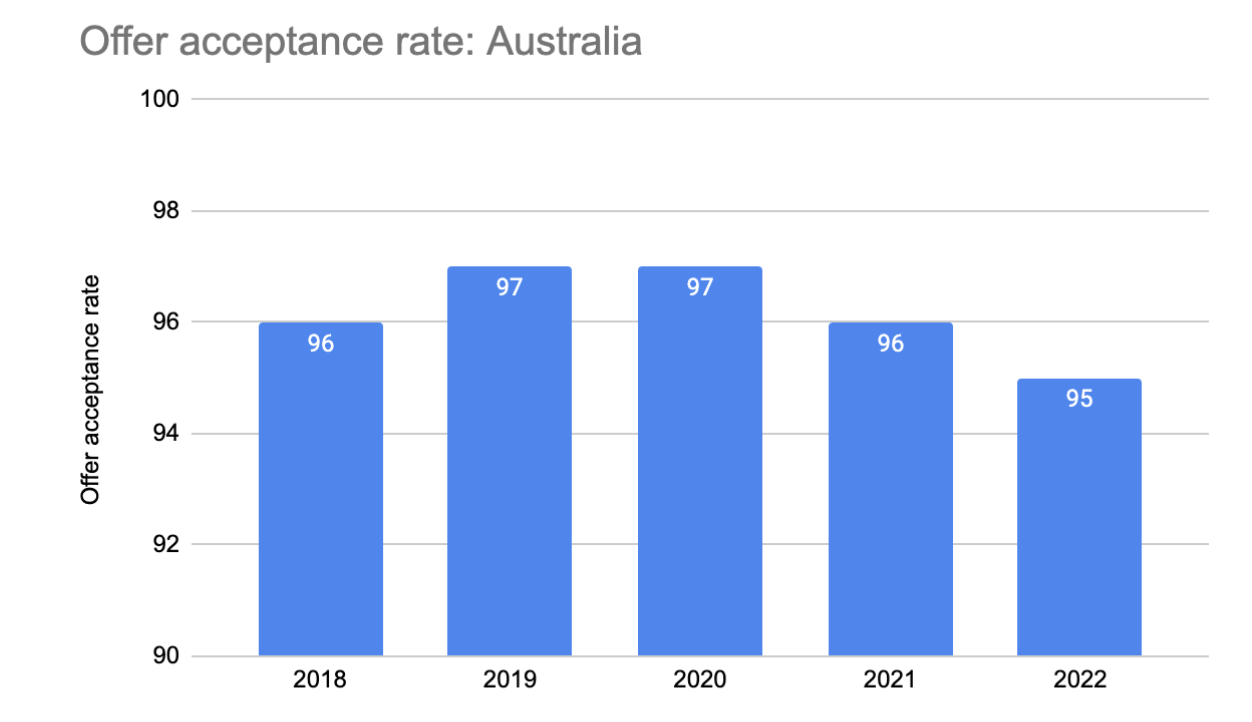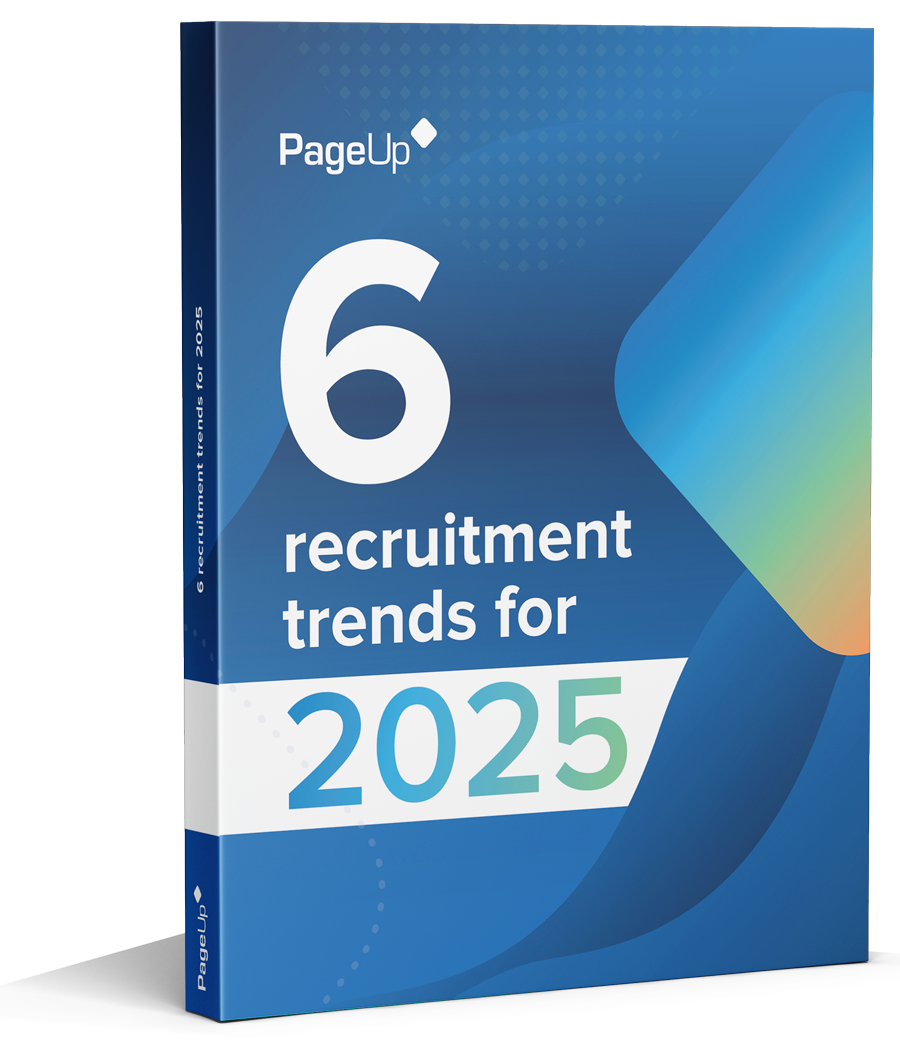Why is top talent so much harder to find?
Right now, every organisationorganization is competing for talent in what is shaping up to be the toughest labour market in decades.
Job opening figures are soaring, but application levels haven’t recovered since the onset of the pandemic. Employers are struggling to find enough talent to fill open roles, with skills gaps and a lack of applications threatening to hold back global recovery.
The job of hiring scarce talent now falls onto talent acquisition teams – many of whom are operating with an increasing workload and reduced headcount. Competition is also fierce. There are 105% more open job ads than there were before the pandemic. Talent professionals are stretched beyond belief, asking, “Where and how do we find our next hire?”
It’s a good question. What we can tell you is that the organisationsorganizations winning the war for talent are leaving no stone unturned when it comes to creative, data-driven sourcing approaches. Their practices include:
- Top of the funnel recruitment marketing strategies
- Targeted content and job pages
- Candidate pipelining and automated engagement
- Alumni and internal talent networks
But before we dig into some examples, let’s explore how we got to today’s tough candidate market.
A snapshot of today’s talent market
PageUp data reveals employers are struggling to attract enough quality candidates, with skills gaps and a lack of applications threatening to hold back Australia’s post-COVID recovery.
Job roles are soaring compared to the same time last year. In April 2021, the number of advertisedadvertized roles was up 52.5% compared to pre-pandemic levels (Jan 2020). In March 2022, that number had increased by 105% compared to pre-pandemic levels. But job applications have not increased in step with this change. The total number of job applications submitted in April 2021 was still down 12.5% from pre-COVID levels, and in March 2022 job applications were down -8%. This shows application numbers are slowly recovering, but are still below pre-covid averages. This ongoing shortage of applicants is hampering business recovery.

There are a few possible reasons for this decline in applications:
- People are hesitant to start a new role with so many roles available —candidates know they have lots of options.
- People are unwilling to switch to a new career amid ongoing uncertainty in the market.
- Salary is a strong motivator for pursuing and accepting a new role – and wage growth has stagnated over the past year. The recent Budget forecasts wage growth of 1.5% in 2021-22, below inflation which is forecast to grow by 1.75%.
- Australia is receiving no skilled migrants who would usually fill these open positions.
Recruiters are working much harder to find enough applicants for a role. They’re also doing so with reduced team capacity while fighting for in-demand talent with pandemic-level compensation and benefits.
This makes it even harder to find the right type of applicants.
Recruiters are spread too thin
With COVID-19 forcing many hiring teams to become lean, recruiters are now forced to do more with less. They’re expected to hire faster, hire at a higher volume, and hire with fewer resources. Recruiters went from an average of 18 open roles per month to an average of 26 in 2022 – an almost 45% increase in workload.

To make things more difficult, offer acceptance rates are falling – currently sitting at 95% compared to 97% in 2019. That means in 2022, your gold-medallist candidate is 66% more likely to reject your offer. Research shows that 63% of jobseekers would reject a job offer after receiving a bad candidate experience. Even with fewer resources, recruiters have to provide an engaging, high-touch experience or risk being told “no” at the final stages.

How are recruiters handling these challenges?
Recruiters are getting out of ‘the recruitment rut’ and trying new and novel sourcing channels to secure skilled and diverse talent.
Talent doesn’t just exist on jobs boards
Recruiters who only post to job boards or rely on LinkedIn search to find talent are fishing from the same talent pool as every other organisationorganization. Winning the best talent requires a more creative and strategic approach to sourcing. Hiring teams are turning to recruitment marketing tactics as an alternative to ‘posting and praying’ on job boards. The aim is to move from ‘fishing’ for talent to proactive attraction.
Did you know career sites are twice as effective as job boards in producing hires?

It takes 36 applications via a job board to result in 1 hire. It takes just 18 applications via your careers site to result in 1 hire.
Recruiters are using careers sites and email communication as valuable sourcing channels to attract the talent they need. To make the most of these sourcing channels, savvy hiring teams are leveraging recruitment marketing tactics such as:
- targeted micro-sites
- employee-generated content
- landing pages
- personalisedpersonalized email nurture programs.
The recruiters who do this well are able to attract talent that exists beyond the well-worn path of job boards and recruitment agencies.
How do top candidates choose their next employer?
Instead of asking why talent is so hard to find, top companies are asking ‘why’ a candidate would want to work for them, ‘where’ they look for jobs and defining their ideal candidate persona.
Recruiters then use these personas to adjust their talent acquisition strategy to attract and engage the people they want. Targeted and relevant job descriptions and employer branding efforts help build real connections with top talent.
The cost of these recruitment marketing initiatives is often far lower than the typical spend on job boards and agency fees. Those who find themselves in a rut should consider trying new recruitment marketing strategies to shift the needle and attract new talent.
Read more: How do I get started with Recruitment Marketing?
Let technology do the heavy lifting
But I’m so swamped I don’t have time to try anything new! Many recruiters will tell us.
It’s true that hiring teams are spread thin. Whether your hiring team is light on resources or struggling to re-hire the talent you lost, the best thing to do is admit you need help – and lean on technology for backup.
“If you don’t take time to stop to sharpen your axe, you’re just getting slower and slower every day,” observed PageUp VP Global Channels Dayne Nash. This was in a recent conversation with Jason Burns, Head of Talent Acquisition and Employer Brand at Businessary. If the sentiment rings true for you, it’s time to stop, reassess your talent needs, and consider how technology can add value.
Technology is helping recruiters automate high-touch candidate attraction and engagement at scale by:
- Building easy to edit careers sites that engage key candidates and capture interest through custom calls to action (CTAs)
- Showcasing content specifically designed to appeal to key talent segments
- Building diverse microsites and landing pages that appeal to these target candidates
- Grow and nurture target talent communities (i.e. developers) with email campaigns and nurture flows to engage at scale
- Using SMS and nudge notification workflows to make it easy to engage with candidates anywhere, any time
By using technology to strategically automate top of the funnel attraction activities, you’ll draw in more of the applicants you need – without having to lift a finger. This will free you up to build strategic relationships and concentrate on finding the best person for the role.
Build sustainable pipelines of talent
Being able to draw from pools and pipelines of talent is an invaluable asset for the time-poor recruiter. Proactive recruiters are building talent pipelines filled with previously vetted candidates, like alumni (former employees), silver-medallists and existing (internal) employees. These people have already been sold on working at the company, so it makes sense to keep them warm and engaged with regular job alerts, personalisedpersonalized content and high-touch communication.
Leverage alumni networks
OrganisationsOrganizations are turning to their former employee networks to reduce their average time to fill and cost per hire. Flight Centre Travel Group recently saved as much as $35,000 per alumni hire by using PageUp Recruitment Marketing to engage and mobilisemobilize its alumni network. They created a dedicated alumni careers site and talent network, email nurture programs and custom targeted job listings.
Building a talent pipeline allowed the Group to dramatically cut sourcing costs and establish a pool of qualified, pre-vetted candidates to draw from.
Watch now: Working towards sustainable talent pipelines with Flight Centre
Champion internal mobility
With companies around the world looking to fill the gap that skilled migrants have left, organisationsorganizations are looking internally to find the skills they need through internal mobility and upskilling programs. But more needs to be done, according to the experts.
“The impact that COVID-19 has had on skilled migration in Australia has only amplified the need for local upskilling, especially for those industries…that traditionally source much of their talent from overseas. But many of Australia’s CEOs appear in danger of missing the opportunity to locally upskill.” – PwC, 24th CEO survey, 2021
Recruiters have turned to internal career development and cross-functional secondments to develop the talent they already have on hand and prepare for future skills shortages.
To run these internal mobility programs successfully, talent teams need to create transparency – do employees know roles are available? Do they understand the role requirements? Are they encouraged to apply for positions?
The organisationsorganizations running these programs are using recruitment marketing tools to establish internal career sites and nurture internal talent pipelines with new roles, openings and opportunities. In the future, the best TA teams will take ownership of internal mobility and talent delivery, signalling a move away from hiring-manager led placements.
Read more: Experts share 6 key talent acquisition trends for 2021
Rely on referrals
Referrals are a strong source of hires for many companies: PageUp data shows that it only takes 5.5 applications through referrals to result in 1 hire. Compare this to 48.6 applications through job boards required to result in 1 hire.
Consider how you can incentivise referrals from within your business (many organisationsorganizations offer referral bonuses) and establish a formal program that you advertiseadvertize internally across all talent segments in your organisationorganization.
Re-thinking benefits
With pay rises on hold for many organisationsorganizations, it can be hard to attract new talent with pandemic-level benefits. Without competitive compensation, how can you convince candidates to apply?
Consider what other benefits your organisationorganization can offer – for example, the ability to work in cross-functional teams and the potential for internal mobility could be a huge drawcard for applicants looking to advance in their careers.
Offering targeted benefits can also help attract specific talent segments. For casual workers, the promise of a ‘stay’ bonus is an appealing reason to apply – and stay with – a potential employer. Travel & Leisure, a PageUp customer, built a dedicated landing page on their career site advertising a staying bonus to attract and retain hourly workers over the summer period.
Next steps
To find talent in a tough candidate market, you need to leave no stone unturned in your search. Re-thinking your hiring strategies and going beyond the well-worn path of job boards and agencies is the first step to getting the most out of your recruitment spend and securing your next star hire.
Is an applicant tracking system holding your business back?
To help you on your talent attraction journey, there’s PageUp Recruitment Marketing. It’s a purpose-built, modern recruitment marketing platform to help you create and edit custom careers sites and landing pages, attract and engage talent at scale, and use advanced personalisationpersonalizationand automation to nurture rich talent pipelines. If you’d like to learn more about our solution and how it can help tackle the tough recruitment challenges you’re facing, get in touch today.
Fresh insights for HR
Stay up to date with HR trends, tips and more when you sign up for our industry newsletter





